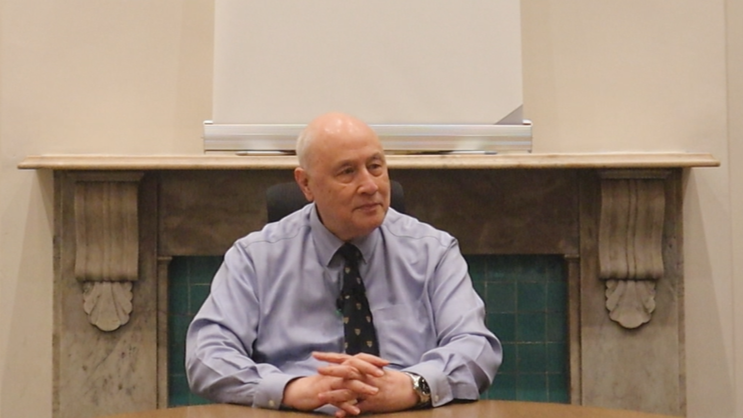
The space economy has the potential to be Hong Kong’s next trillion-dollar frontier, with a Chinese “SpaceX-like” commercial space company likely to emerge within the next two to three years to develop reusable orbital rockets, Anthony Neoh, former chairman of the Securities and Futures Commission of Hong Kong, told China Daily.
“The worth of this trillion-dollar industry will be counted not only in Hong Kong dollars, but also in US dollars and pounds. Hong Kong has the right ingredients to ride the momentum,” Neoh said. The renowned barrister headed the SFC — which regulates the city’s securities and futures markets — from 1995 to 1998, and now co-chairs the Asian Academy of International Law.
Neoh summarizes the city’s edge as being its unique combination of global reach, legal reliability, and financial sophistication. As one of the world’s most open and accessible markets, supported by a mature and diversified financial infrastructure, Hong Kong serves as a vital bridge between international capital and frontier industries. Its common law system — the legal foundation for most financing practices worldwide — provides the rule-of-law certainty that investors rely on.
While scientists anticipate that mining near-Earth asteroids and the moon will emerge as a key aspect in the commercialization of space in the coming years, satellites that help connect the unconnected and bridge the digital divide are opening up a new frontier of commercial possibilities.
“Technology is no longer the limiting factor on how far humanity’s ambitions could stretch across the solar system. The key lies in a viable commercial model and long-term commitment,” Neoh said.
Major economies are joining a space internet race, with technology giants spending billions of dollars on satellite technology. For decades, geostationary Earth orbit (GEO) — 36,000 kilometers above Earth — was the undisputed domain of satellite communications, powering everything from television broadcasts to internet backhaul and voice services.
ALSO READ: Chinese firm launches world's mightiest solid-fueled rocket
Today, the rise of broadband megaconstellations in low Earth orbit (LEO) is reshaping expectations around performance and cost. Installed at altitudes of 2,000 km or less, and circling the Earth every 90 minutes, LEO satellites could supplement cell phone, broadband, maritime, and aviation data requirements. Up to 70,000 LEO satellites are expected to be launched over the next five years, according to Goldman Sachs Research. The European Space Agency forecasts that around 100,000 satellites will be in orbit by 2030.
The United States leads the pack with SpaceX’s Starlink, Elon Musk’s satellite internet venture, which has launched nearly 10,000 satellites in total. As of Oct 8, there are 8,608 Starlink satellites in orbit, of which 8,592 are working, according to US astronomer Jonathan McDowell, who tracks the constellation on his website.
“We are the only country capable of catching up quickly,” Neoh said.
Hong Kong is now home to four local companies actively engaged in the space economy. Two of them — AsiaSat and APT Satellite — operate GEO satellites that together cover 45 percent of Asia’s broadcasting services, according to Neoh. The other two companies manufacture small satellites measuring 1 meter by 1 meter.
Six Chinese mainland firms have also expanded their presence in Hong Kong, four of which focus on satellite launches.
“At least two companies I know have basically completed successful trials of reusable launchers, and I expect they’ll be ready for production next year,” Neoh says. “I’m not sure whether they could catch up with SpaceX, but given time, I believe they eventually will.”
The ability to reuse orbital rockets significantly reduces launch costs. Currently, the US still leads in the number of launches, with China coming second. “For every six launches by the US, we have about one,” Neoh said.
The key difference lies in reusability, as the US has long dominated reusable rocket technology, with the launch vehicle of SpaceX being reused up to 32 times. That makes a world of difference in cost efficiency.
Neoh said he believes that China is now on the right track, and a domestically developed “SpaceXlike” commercial space company with reusable launch vehicles capable of satellite deployment is likely to emerge within the next two to three years.
“It may not necessarily be identical to SpaceX in every aspect, but comparable in its technological ambitions,” he said. Neoh said he expects commercial operations to begin within that timeframe, paving the way for a new wave of business opportunities.


